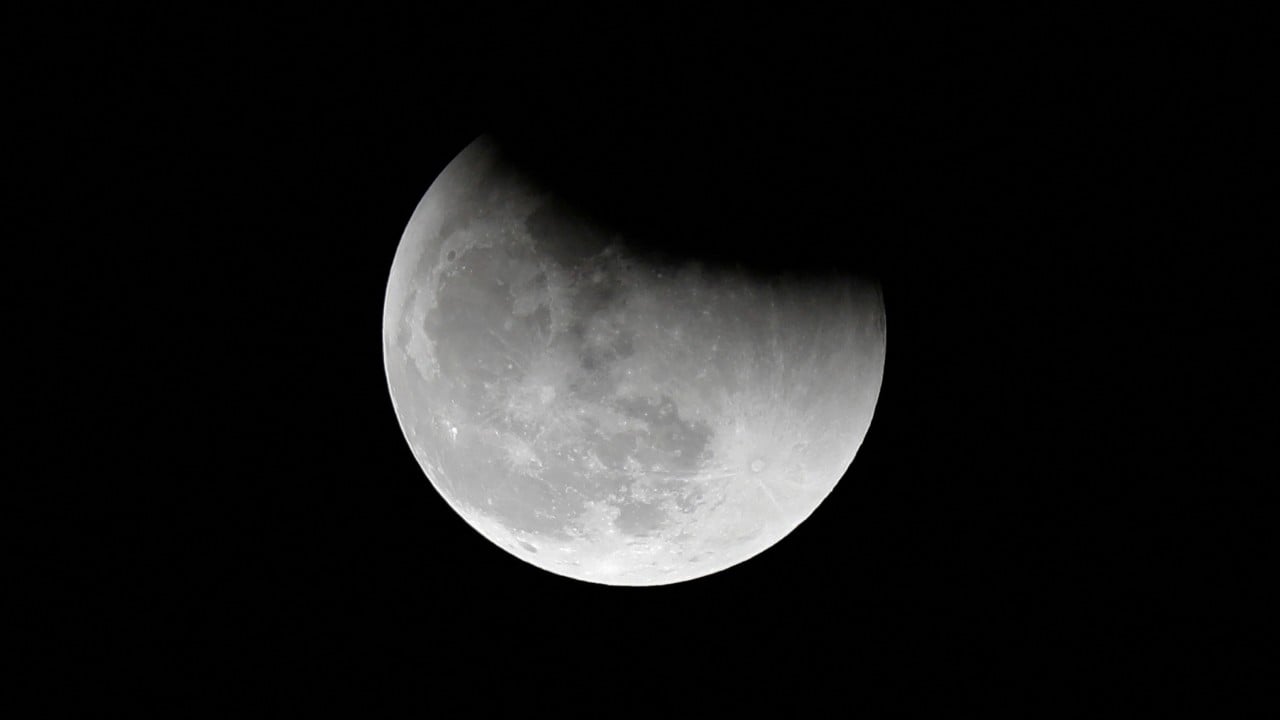Water ice is likely to exist at the moon’s south pole, but it would be fragmented, scattered and buried deep beneath the surface, posing significant challenges for detection and extraction, according to a new study by Chinese researchers.
Advertisement
Using powerful Earth-based instruments, including the world’s largest radio telescope and one of the most advanced radar systems, the team estimated that ice made up no more than 6 per cent of the material within the top 10 metres (33 feet) of lunar soil in the region.
The ice was thought to exist as metre-sized chunks buried 5-7 metres underground in the moon’s most promising “cold traps”, known as permanently shadowed regions. Smaller, isolated patches might also lie near the surface, the team wrote in the latest issue of the Chinese journal, Science Bulletin.
The findings, the researchers wrote, could help in the selection of landing sites for future lunar missions and inform the design of the proposed China-led research base on the moon.
Hu Sen, a planetary geochemist at the Institute of Geology and Geophysics in Beijing, called the work “impressive”. He said that using China’s newly built incoherent scatter radar in Sanya (SYISR) alongside the FAST telescope to search for water ice was a “really creative approach”.
While Hu was not involved in the research, he noted that the results aligned with previous impact experiment findings and added new evidence that water ice existed on the moon.
Advertisement
“The study also opened a new pathway to investigate water abundances on the moon,” he said.
So far, no liquid water has been found on the moon. “What we do know is that some water is bound within the lunar soil as ‘structural water’, and some is preserved as ice in cold traps inside permanently shadowed regions,” Hu said on Wednesday.


